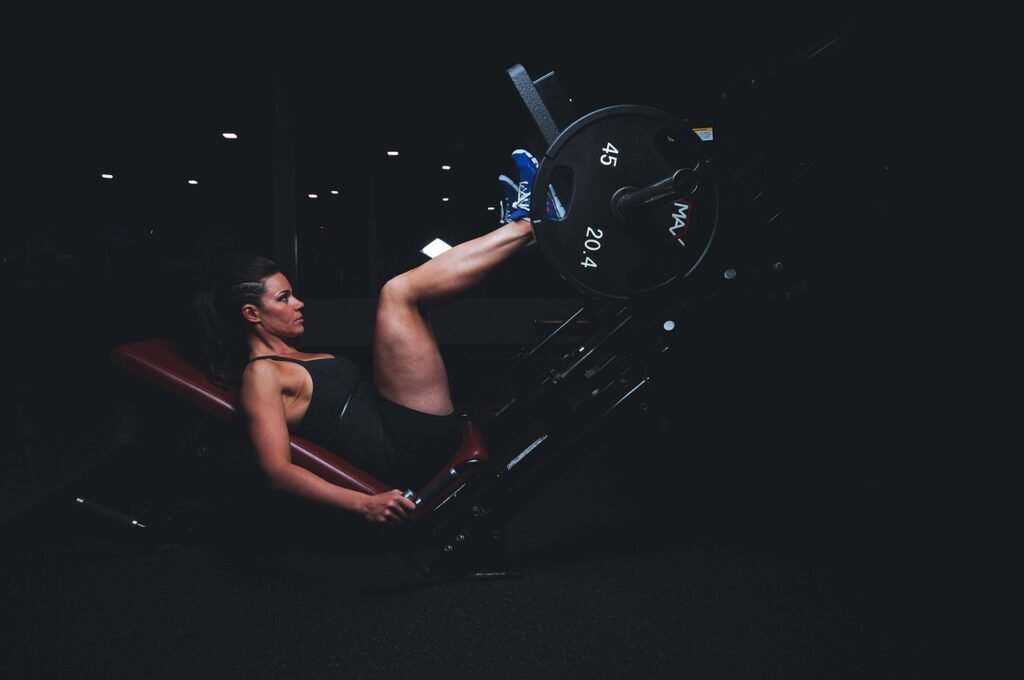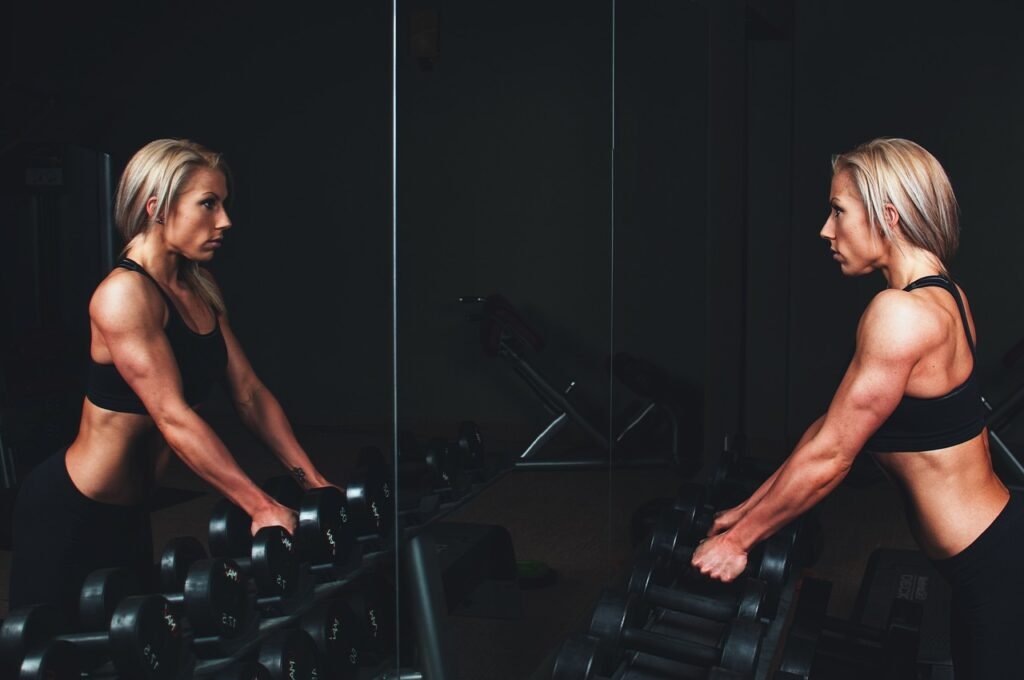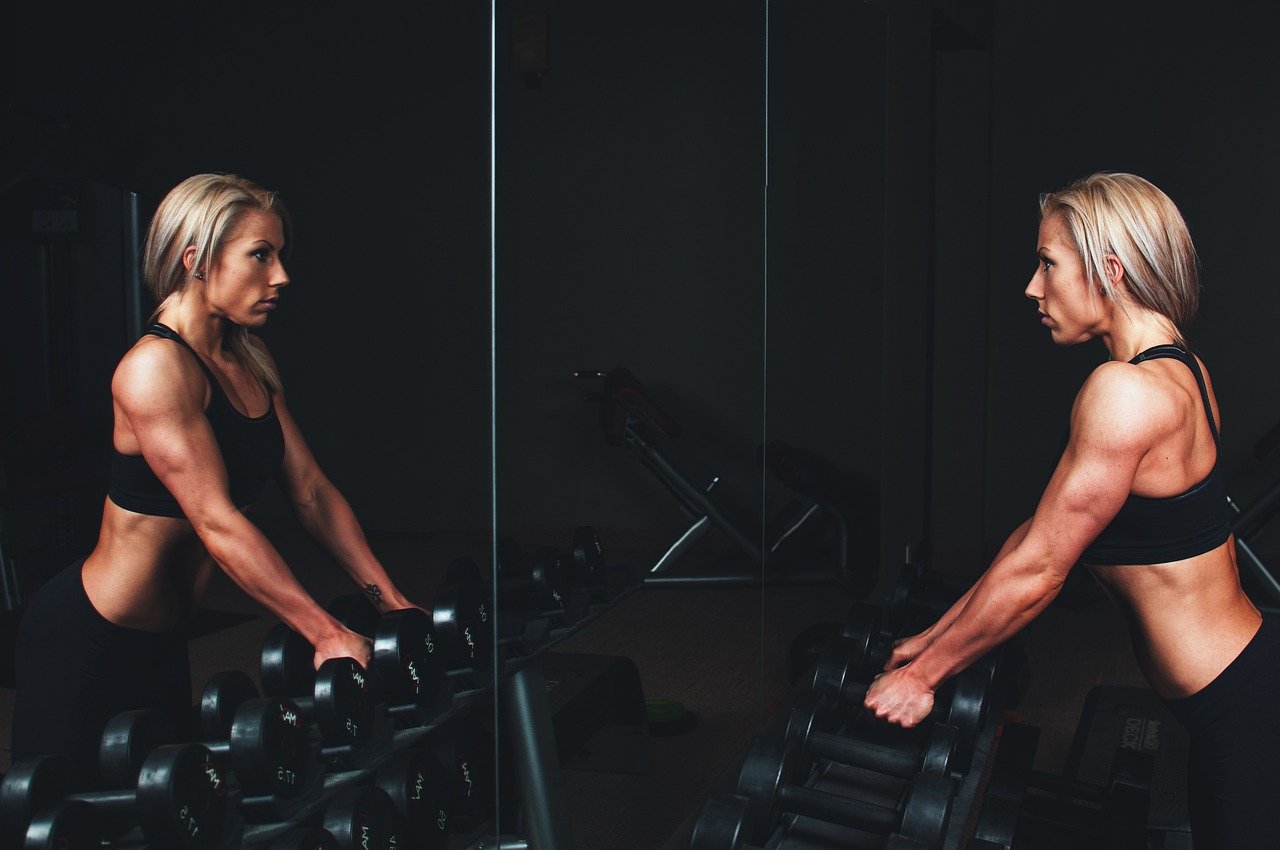So, you’ve made the decision to embark on a fitness journey and achieve your fitness goals. Congratulations! But now, you’re faced with an overwhelming array of fitness equipment options, and you’re not quite sure where to start. Well, fear not! In this article, we will guide you on how to choose the right equipment for your fitness goals, ensuring that you make informed decisions and set yourself up for success on your fitness journey. Let’s get started!
Consider Your Fitness Goals
Assess Your Fitness Goals
Before you begin your fitness equipment search, it’s essential to assess your fitness goals. Take some time to identify what you hope to achieve through your workouts. Are you looking to lose weight, build muscle, improve your cardiovascular health, or increase flexibility? Knowing your specific fitness goals will help guide your equipment choices and ensure that you select the right tools to help you reach those goals.
Identify Specific Target Areas
Once you’ve assessed your overall fitness goals, it’s time to identify the specific target areas you want to focus on. Perhaps you want to tone your arms, strengthen your core, or improve your leg muscles. Understanding which areas of your body you want to work on will help you choose the right equipment that will effectively target those muscles and help you achieve the desired results.
Determine Exercise Preferences
Everyone has their preferred method of exercise, whether it’s running, weightlifting, or practicing yoga. Take some time to consider your exercise preferences. If you enjoy cardio workouts, you might lean towards equipment like treadmills or stationary bikes. On the other hand, if you prefer strength training, you might opt for equipment that focuses on resistance or weightlifting. Understanding your exercise preferences will make your equipment selection process more enjoyable and ensure that you choose equipment that you will enjoy using regularly.
Evaluate Your Current Fitness Level
Assess Your Strength and Endurance
Understanding your current strength and endurance levels is crucial when selecting the right fitness equipment. Assess your strength by determining how much weight you can currently lift or how many push-ups you can do. Evaluate your endurance by considering how long you can sustain intense physical activity, such as jogging or cycling. By knowing your baseline fitness level, you can choose equipment that will challenge you appropriately and help you progress towards your fitness goals.
Consider Flexibility and Mobility
Flexibility and mobility play a significant role in overall fitness. Consider your current flexibility and mobility levels when selecting equipment. If you have limited range of motion or struggle with flexibility, equipment that focuses on stretching and mobility exercises, such as resistance bands or foam rollers, may be beneficial for you. Understanding your body’s limitations will ensure that you choose equipment that helps improve your flexibility and mobility safely.
Determine Cardiovascular Fitness
Cardiovascular fitness is a key component of overall health. Assess your current cardiovascular fitness level to select equipment that will help you improve in this area. Consider your resting heart rate, how quickly your heart rate rises during physical activity, and how long it takes to return to a resting state. This information will guide you in choosing equipment that provides effective cardiovascular workouts and allows you to improve your endurance and heart health.

Know Your Budget
Set a Realistic Budget
Before embarking on your fitness equipment journey, it’s essential to set a realistic budget. Determine how much you are willing and able to invest in your fitness equipment. Setting a budget will prevent you from overspending or experiencing buyer’s remorse. It will also help narrow down your options and guide you towards equipment that fits within your financial means.
Research Equipment Prices
Once you have a budget in mind, take the time to research equipment prices. Compare prices across different brands and retailers to get an idea of the price range for the equipment you are interested in. Look for any ongoing promotions or discounts that may make the equipment more affordable. By understanding the price landscape, you can make informed decisions and find the best value for your money.
Consider Long-Term Investment
When considering your budget, also take into account the longevity of the equipment. Investing in quality equipment can be more expensive upfront but may save you money in the long run by lasting longer and requiring fewer repairs or replacements. Consider the durability of the equipment and read reviews from other users to gauge its longevity. Sometimes it’s worth spending a little more initially for equipment that will serve you well for years to come.
Understand Different Types of Equipment
Cardio Equipment
Cardio equipment focuses on improving cardiovascular fitness and includes options such as treadmills, stationary bikes, ellipticals, and rowing machines. These machines provide workouts that elevate your heart rate and help burn calories. When considering cardio equipment, think about which machines align with your exercise preferences and provide the type of workout that you enjoy.
Strength Training Equipment
Strength training equipment aims to build and tone muscles and often includes items like dumbbells, resistance bands, and weight machines. When choosing strength training equipment, consider the specific muscle groups you want to target and choose equipment that allows you to effectively work those muscles. Also, think about the space you have available for larger strength training machines, such as home gyms or squat racks.
Flexibility and Mobility Equipment
Flexibility and mobility equipment focus on improving range of motion, mobility, and overall flexibility. Yoga mats, foam rollers, and resistance bands are examples of equipment that can aid in flexibility and mobility exercises. When selecting this equipment, consider your current flexibility levels and choose items that can help you stretch and improve mobility in the target areas you want to work on.

Consider Space and Storage
Assess Available Space
Before purchasing fitness equipment, assess the available space in your home or workout area. Measure the dimensions of the area where you plan to keep the equipment to ensure it will fit comfortably. Take into consideration any additional space needed for you to move around while using the equipment. By evaluating your available space, you can choose equipment that fits within your designated workout area.
Determine Storage Options
If your available space is limited, it’s important to consider storage options. Some fitness equipment, like folding treadmills or compact weight sets, are designed to minimize space when not in use. Others, such as resistance bands or yoga mats, can be easily stored in closets or under beds. Consider how easily you can store the equipment away when not in use to keep your space organized and maximize functionality.
Consider Portability
If you anticipate needing to move your equipment frequently or if you have limited storage space, consider the portability of the equipment. Look for options that are lightweight and easy to transport. For example, adjustable dumbbells or resistance bands can be packed and taken on trips or easily moved around your home. Portability ensures that you can use your equipment wherever and whenever it is convenient for you.
Seek Professional Advice
Consult a Fitness Trainer
Seeking professional advice from a fitness trainer can be incredibly beneficial when choosing the right equipment. A fitness trainer can assess your fitness goals, evaluate your current fitness level, and provide tailored recommendations based on your individual needs. They can also teach you proper form and techniques to make the most of your equipment and minimize the risk of injury.
Get Recommendations from Experts
In addition to consulting a fitness trainer, seek recommendations from other fitness experts. This could include physiotherapists, sports medicine doctors, or experienced athletes. Their expertise can provide valuable insights into which equipment is best suited for your specific fitness goals and any physical limitations you may have. Experts can also recommend reputable brands and models that have proven to be effective and reliable.
Consider Physical Limitations
Before making your final equipment selections, consider any physical limitations you may have. If you have existing injuries or medical conditions, it’s crucial to choose equipment that won’t exacerbate your condition or cause further harm. Consult with medical professionals to ensure that the equipment you choose is safe and appropriate for your specific needs. Understanding and considering your limitations will help prevent injuries and setbacks on your fitness journey.

Try Before You Buy
Visit a Fitness Equipment Store
To ensure that the equipment you are considering is a good fit for you, visit a fitness equipment store and try out different models. Testing the equipment in person allows you to get a feel for its functionality, stability, and comfort. Experiment with different settings and features to ensure that the equipment meets your expectations and will provide an enjoyable and effective workout experience.
Test Equipment Functionality
When trying out different equipment, pay attention to its functionality. Are the controls intuitive and easy to use? Does the machine operate smoothly and quietly? Take note of any features or functions that are important to you and make sure the equipment you are considering meets those criteria. Testing the functionality of the equipment ensures that it aligns with your fitness preferences and will be enjoyable to use.
Consider User-Friendliness
While testing the equipment, also consider its overall user-friendliness. Does it feel comfortable to use? Is it adjustable to accommodate your height, weight, or specific needs? These factors can greatly impact your overall experience with the equipment. Choose equipment that is user-friendly and adaptable to ensure that you can easily and comfortably incorporate it into your fitness routine.
Consider Safety Features
Look for Stability and Durability
Safety should be a top priority when selecting fitness equipment. Look for equipment that offers stability and durability. Ensure that it is constructed from high-quality materials and can withstand the intensity of your workouts. Pay attention to the weight capacity of the equipment and choose options that can safely support your body weight and provide optimal stability during your exercises.
Check for Safety Certification
When purchasing fitness equipment, check if it has any safety certifications. Look for labels or logos that indicate the equipment has undergone rigorous testing and meets safety standards. Safety certifications provide reassurance that the equipment has been thoroughly evaluated and is deemed safe for use. Investing in certified equipment minimizes the risk of accidents or injuries during your workouts.
Consider Injury Prevention Features
Some fitness equipment features specific injury prevention mechanisms that can enhance your safety during workouts. Examples include shock absorption technology in treadmills or adjustable safety catches on weightlifting racks. Consider the unique safety features offered by different equipment options and evaluate which ones align with your needs and priorities. Equipment with injury prevention features adds an additional layer of protection during your fitness journey.

Research User Reviews
Read Online Reviews
When considering fitness equipment, reading online reviews can provide valuable insights from other users. Take the time to read a variety of reviews to get a comprehensive understanding of each piece of equipment. Pay attention to both positive and negative feedback, as this will give you a well-rounded perspective. Reviews can often highlight specific pros and cons that you may not have considered and help you make a more informed decision.
Consider Both Positive and Negative Feedback
When reading reviews, keep in mind that personal experiences can vary. Consider both positive and negative feedback and look for recurring themes or patterns in the reviews. This will give you a more accurate representation of the equipment’s overall performance and durability. By considering a variety of perspectives, you can make a more informed decision and choose equipment that is likely to meet your expectations.
Look for Equipment Reliability
One critical aspect to consider when researching user reviews is equipment reliability. Pay attention to reviews that mention the longevity and durability of the equipment. Look for comments on how well the equipment holds up over time and whether it requires frequent repairs or maintenance. Reliability is crucial to ensure that your investment in fitness equipment will provide long-term value and withstand the demands of your workouts.
Set Realistic Expectations
Focus on Consistency and Discipline
When embarking on a fitness journey, it’s important to set realistic expectations. Understand that reaching your fitness goals will require consistency and discipline. No matter how effective the equipment is, it cannot deliver results without your dedication and commitment. Focus on establishing a regular exercise routine and staying disciplined in your workouts to achieve optimal results.
Gradually Increase Intensity
As you become more comfortable with your chosen equipment and start seeing progress, it’s important to gradually increase the intensity of your workouts. Push yourself to challenge your body and continue making progress towards your fitness goals. By gradually increasing the intensity of your workouts, you can avoid plateauing and keep your body continuously adapting and improving.
Combine Equipment for Optimal Results
To achieve optimal results, consider combining different types of equipment in your workouts. Cardio equipment can be complemented with strength training exercises to build both endurance and muscle. Flexibility and mobility equipment can be incorporated into your routine to improve overall flexibility and prevent injuries. By combining different equipment and workout styles, you can create a well-rounded fitness program that addresses all aspects of your fitness goals.
Choosing the right fitness equipment for your goals is a crucial step towards achieving a healthy and active lifestyle. By considering your fitness goals, assessing your current fitness level, understanding your budget, and researching different types of equipment, you can make an informed decision that aligns with your needs and preferences. Seek professional advice, visit fitness equipment stores, and read user reviews to further enhance your decision-making process. With the right equipment and a realistic approach, you can embark on a successful fitness journey and reach your desired goals. Remember, consistency, gradual progress, and a well-rounded approach are key to maximizing the benefits of your chosen equipment and achieving long-lasting results.


